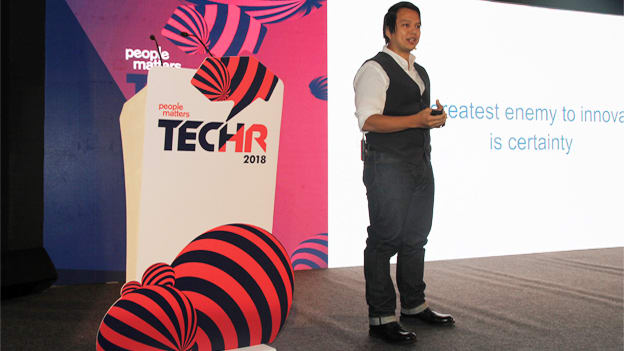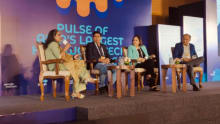If we can measure, we can improve - Experiments in hiring and technology

Keeping up with the core philosophy of ‘helping people get jobs’, Indeed, a data-driven organization believes that if ‘we are able to measure, we can radically improve lot of processes like hiring’. Driven by the core principles of ‘innovation and serving job seekers first’, Indeed strongly believes in ‘being open to new ideas and making decisions based on measurement and not on the gut feelings. Michael Miller, Product Director, Indeed, divulged more details on how by leveraging on technology and measurement, they came up with the product that made the hiring process more efficient.
Michael presented a case study wherein as a part of Indeed’s R&D initiatives, an experiment was conducted - some hundreds of recruiters and hiring managers were gathered to discuss the nature of the hiring process. They dissected and elaborated on ‘what goes into the hiring process and what are some of the elements which are most time-consuming and if there is a way to minimize recruiters’ and hiring managers’ time and efforts while conducting the process. They came up with a chart which enlisted all the steps and activities which goes into the hiring process. They also ascertained how much time team members are spending on each activity. Herewith presenting the key findings of the experiment.
The experiment revealed that three major activities, namely, sourcing, profile review and phone screen were taking most of the recruiters’ time. Firstly by observing the sourcing process, it was determined that passive sourcing was taking most of the time and was highly inefficient. Armed with this data, the recruiters were able to completely stop passive sourcing and focused more on the active sourcing which resulted in a big reduction in total requisition time.
The next step that the experiment tackled was reviewing. While reviewing was taking a lot of time, only a small percentage of candidates were moving forward to the next step. To reduce the time spent on reviewing, Indeed leveraged the existing data they have (resume + job description + actions) and built a predictive model which led to more positive interactions with the potential candidates. It resulted in a moderate reduction in time and effort spent per requisition.
The last step that the experiment tackled was the ‘phone screen’ step. It was proving to be time-consuming step with recruiters spending a lot of time building rapport with potential candidate. To fix this challenge, Indeed came up with a system to ask questions to candidates that helped filter them better. The system was efficient in asking the basic questions and the process also showed the interest level of candidates, with only the really serious candidates attempting the questions. This led to a significant reduction in time spent per requisition. It should be noted that Indeed’s recruiting team did not completely eliminate the phone scree, but rather moved to later in the process. It was used to better prep candidates for their interviews.
By focusing on these elements, the entire initial process of recruiting process could be made more efficient. It was seen that by leveraging on technology, data, and measurement, enormous improvements can be brought about in any system. The need is to keep innovating and keep measuring to resurrect processes and systems which consume our time and efforts. After all, if we can measure, we can improve.










